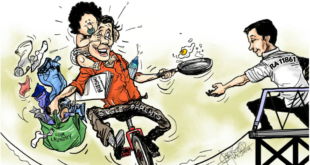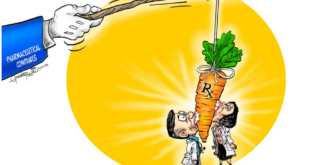Look, when the country’s top amateur players flew abroad, we knew the PBA’s popularity would be in great danger

Social media has been brutal about the attendance—or lack thereof—at Philippine Basketball Association (PBA) games.
Some netizens have compared the Ninoy Aquino Stadium (NAS), where Rain or Shine and NorthPort played last Wednesday, to the Smart Araneta Coliseum, which hosted the Premier Volleyball League’s Creamline and Choco Mucho last Thursday.
While the NAS was eerily quiet with many empty seats, the Big Dome was bursting with energy as more than 17,000 fans showed up to cheer their hearts out for the Cool Smashers and the Flying Titans.
A lot of theories have been floated about the PBA’s waning popularity.
Sideliners believe the PBA is struggling due to the change in consumer behavior. Unlike before, when life was simpler, the rising cost of commodities, the heavy traffic, and their stressful jobs make ordinary Filipinos think long and hard before spending time and money watching the games live.
Others say the games’ easy accessibility has been counterproductive to league attendance. PBA games can now be accessed on the internet, allowing fans to watch them anywhere as long as they have mobile phones, a stable connection, and live streaming subscriptions.
But all these theories can be thrown out the window because the truth is that the stars of the game, whom the fans had been willing to watch and spend time and money for, are no longer in the league — heck, they’re not even in the country.
Look, when the country’s top amateur players flew abroad, we knew the PBA’s popularity would be in great danger.
Thirdy Ravena started the trend when he declined to join the PBA draft following a stellar collegiate career at Ateneo de Manila University. Instead, he did the unthinkable by joining Japanese club San-En NeoPhoenix.
In fairness to Ravena, he reached out to PBA Commissioner Willie Marcial and PBA Chairman Ricky Vargas, saying that he was not dodging the PBA draft but just wanted to further improve his skills abroad.
A few months later, top amateur stars like Carl Tamayo of the University of the Philippines and Dwight Ramos of Ateneo followed suit, sparking the exodus that involved even established PBA players like Ray Parks of TNT Tropang Giga, Matthew Wright of Phoenix Super LPG and Kiefer Ravena of NLEX.
Kiefer, surprisingly, still had a live contract at the time, so he had to ask the Road Warriors to release him so he could join his younger brother in Japan.
It didn’t end there.
When top amateur prospect AJ Edu arrived in the country to see action for Gilas Pilipinas in the FIBA Basketball World Cup last year, speculations were rife that he would soon sign with a PBA club. After all, he had just wrapped up his collegiate career in the United States and was ready to play in the professional ranks.
But it didn’t happen.
Instead, the 6-foot-10 former Batang Gilas standout signed up with the Toyama Grouses in Japan, leaving the PBA empty-handed and heartbroken.
The same thing happened with Kai Sotto, who grew up watching his father play in the PBA. After his stints in the United States and Australia, he chose to play in Japan while chasing his dream of becoming the first Filipino to play in the National Basketball Association.
The PBA has lost a lot of young players to overseas teams. Top amateur stars like SJ Belangel, Rhenz Abando, RJ Abarrientos, Migs Oczon, Dave Ildefonso, Juan Gomez de Liaño, and Justin Gutang are now seeing action elsewhere for better opportunities.
The PBA has to do something to retain the stars of the future.
Although the league still has popular players like Scottie Thompson, June Mar Fajardo, Japeth Aguilar, and LA Tenorio, the future looks gloomy. No one seems to be able to carry the torch in the years to come.
The clock is ticking for the PBA, and it has to knock down the game-winning basket if it wants to have a fighting chance against other sports leagues that have become the toast of local fans. It’s now or never.
*****
Credit belongs to: tribune.net.ph
 Atin Ito First Filipino Community Newspaper in Ontario
Atin Ito First Filipino Community Newspaper in Ontario






